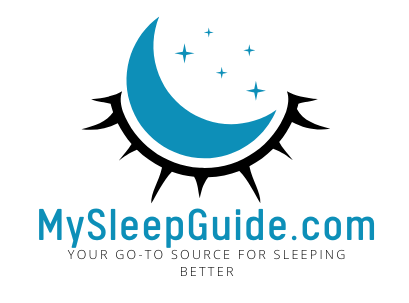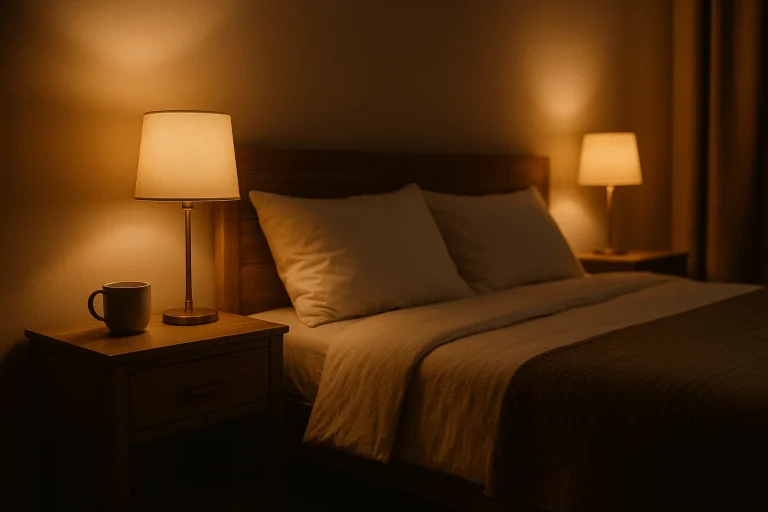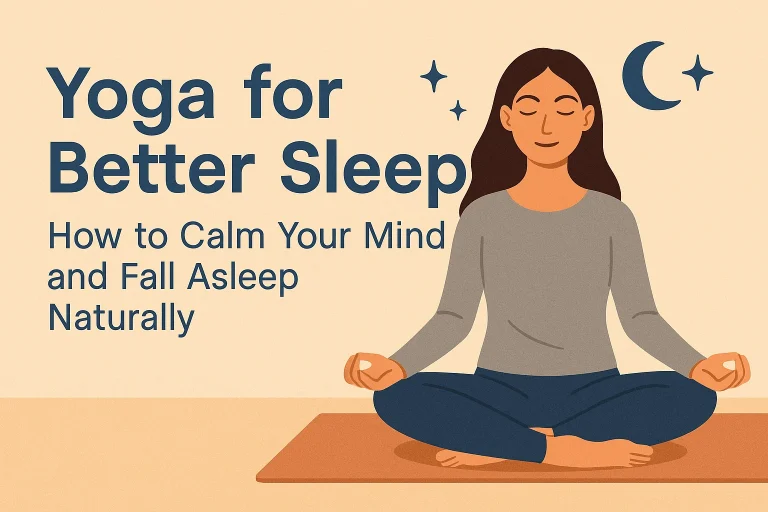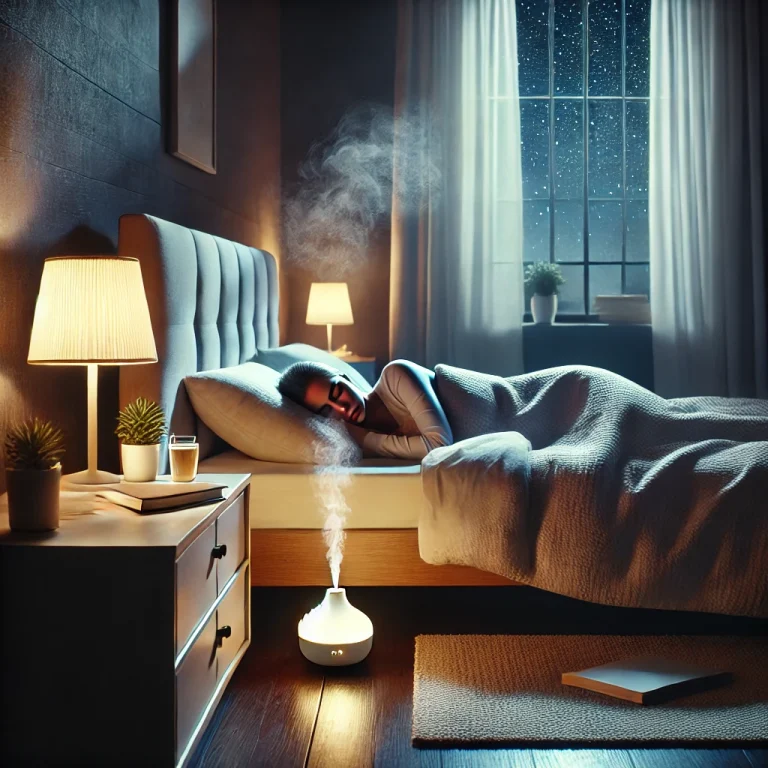7 Powerful Breathing Exercises for Better Sleep You Can Try Tonight
Struggling to fall asleep night after night can feel exhausting. Believe me, I’ve been there. After countless trials with essential oils, sleep masks, I’ve found a game-changer: Breathing Exercises for Sleep. These calming techniques have genuinely transformed my sleep routine.
Can Breathing Exercises Really Help You Sleep?
Surprisingly, yes! Breathing exercises are an easy yet powerful way to quiet your racing mind, relax your tense body, and finally drift into the restful sleep you deserve.
Here’s how breathing exercises work their magic:
- They calm your nervous system, promoting relaxation.
- They lower your heart rate and blood pressure.
- They help quiet racing thoughts, easing anxiety and stress.
- They encourage deeper and more restorative sleep.
Ready to finally get some restful sleep? Try one of these easy breathing exercises tonight!
1. 4-7-8 Breathing Technique
Known as the ultimate “relaxation breath,” this technique is perfect for anyone struggling with anxiety or sleepless nights.
How to do it:
- Close your eyes and breathe in quietly through your nose for 4 seconds.
- Hold your breath comfortably for 7 seconds.
- Exhale slowly through your mouth, making a gentle “whooshing” sound, for 8 seconds.
- Repeat this cycle four times or until you feel relaxed.
I personally use this method whenever anxiety strikes or right before bed to signal my body it’s time to relax.
2. Alternate Nostril Breathing
This yoga-inspired technique balances your mind and body, helping you unwind from a busy or stressful day.
How to do it:
- Sit comfortably with your spine straight.
- Using your thumb, gently close your right nostril and inhale deeply through the left nostril.
- Switch, closing the left nostril with your ring finger, and exhale slowly through the right nostril.
- Keep alternating nostrils for 3-5 minutes.
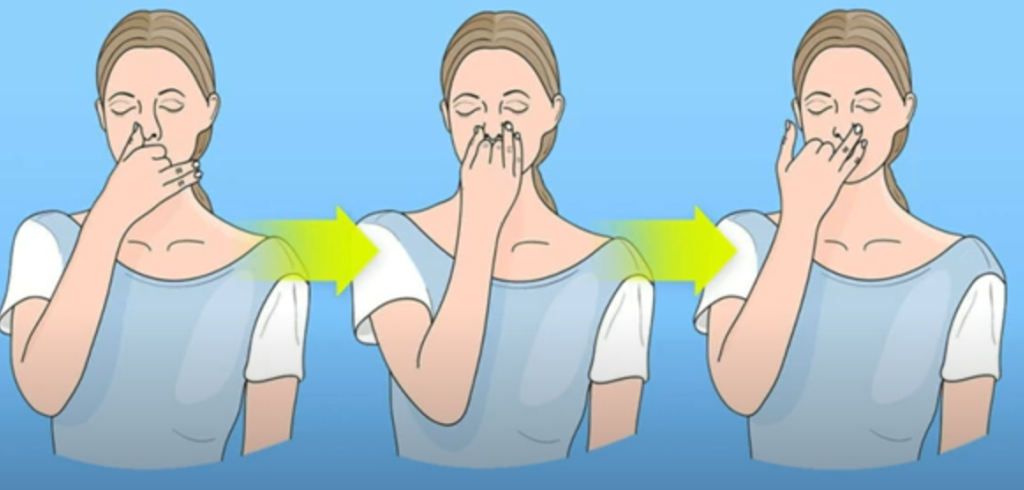
You’ll immediately feel calmer, and this exercise is great if anxiety is keeping you awake.
3. Double the Exhale Method
Doubling your exhale length triggers your body’s relaxation response, making it perfect for bedtime.
How to do it:
- Lie down comfortably.
- Inhale through your nose for 3-4 seconds.
- Exhale slowly through your mouth for 6-8 seconds.
- Continue this breathing pattern until you feel yourself drifting off.
4. Mindful Counting Breathing
This mindfulness-based technique quiets your mind by keeping you focused on counting breaths, perfect if your thoughts keep racing at night.
How to do it:
- Lie down or sit comfortably.
- Breathe in gently through your nose, counting silently.
- Exhale for the same number of counts.
- Pause for a moment before repeating.
- Concentrate on relaxing your muscles with each breath.
5. Box Breathing
Popular among Navy SEALs and athletes, box breathing is incredibly effective for deep relaxation and promoting restful sleep.
How to do it:
- Inhale deeply through your nose for 4 seconds.
- Hold your breath for 4 seconds.
- Exhale gently through your mouth for 4 seconds.
- Pause for another 4 seconds before repeating the cycle.
- Continue for several cycles or until you feel calm and sleepy.
6. Progressive Muscle Relaxation Breathing
Combine breathing with muscle relaxation for profound tension release.
How to do it:
- Lie down comfortably.
- Breathe deeply and slowly, inhaling and exhaling evenly.
- With each inhale, tense a muscle group (feet, legs, abdomen, chest, arms, neck) briefly.
- On each exhale, release the tension completely.
- Work your way up from your toes to your head.

7. Guided Relaxation Audios
Although not strictly a breathing exercise, guided relaxation audios (such as those from Excel at Life) blend calming visuals with soothing breathing techniques.
My personal favorites include:
These guided audios create peaceful imagery, quieting your mind and guiding you effortlessly into sleep.
CHECK OUT THESE RELATED POSTS:
Frequently Asked Questions (FAQ)
1. What is the 4-7-8 breathing technique?
The 4-7-8 technique involves inhaling through the nose for 4 seconds, holding the breath for 7 seconds, and exhaling through the mouth for 8 seconds. This pattern helps activate the parasympathetic nervous system, promoting relaxation and aiding in falling asleep.
2. How does alternate nostril breathing work?
Alternate nostril breathing, or Nadi Shodhana, entails closing one nostril while inhaling through the other, then switching sides. This practice aims to balance the body’s energy and calm the mind, beneficial before bedtime.
3. What is box breathing?
Box breathing, also known as square breathing, involves inhaling for a count (e.g., 4 seconds), holding the breath for the same count, exhaling for the same count, and holding again. This method reduces stress and improves sleep quality.
4. Can breathing exercises help with insomnia?
Yes, incorporating breathing exercises into your nightly routine can activate the body’s relaxation response, making it easier to fall and stay asleep. Techniques like diaphragmatic breathing and the 4-7-8 method have been shown to improve sleep quality.
5. How long should I practice these exercises before bed?
Starting with 3 to 5 minutes of breathing exercises before bed can be beneficial. As you become more comfortable, you can extend the duration to 10 minutes or more, depending on your preference.
6. Can I combine breathing exercises with other relaxation methods?
Absolutely. Combining breathing exercises with practices like progressive muscle relaxation, guided imagery, or listening to calming music can enhance relaxation effects and improve sleep quality.
Try incorporating these breathing exercises tonight, and I bet you’ll notice a difference immediately. Good sleep doesn’t have to be elusive—it’s just a few calming breaths away.
Which breathing exercise will you try first? I’d love to hear—which exercise will you try first?
